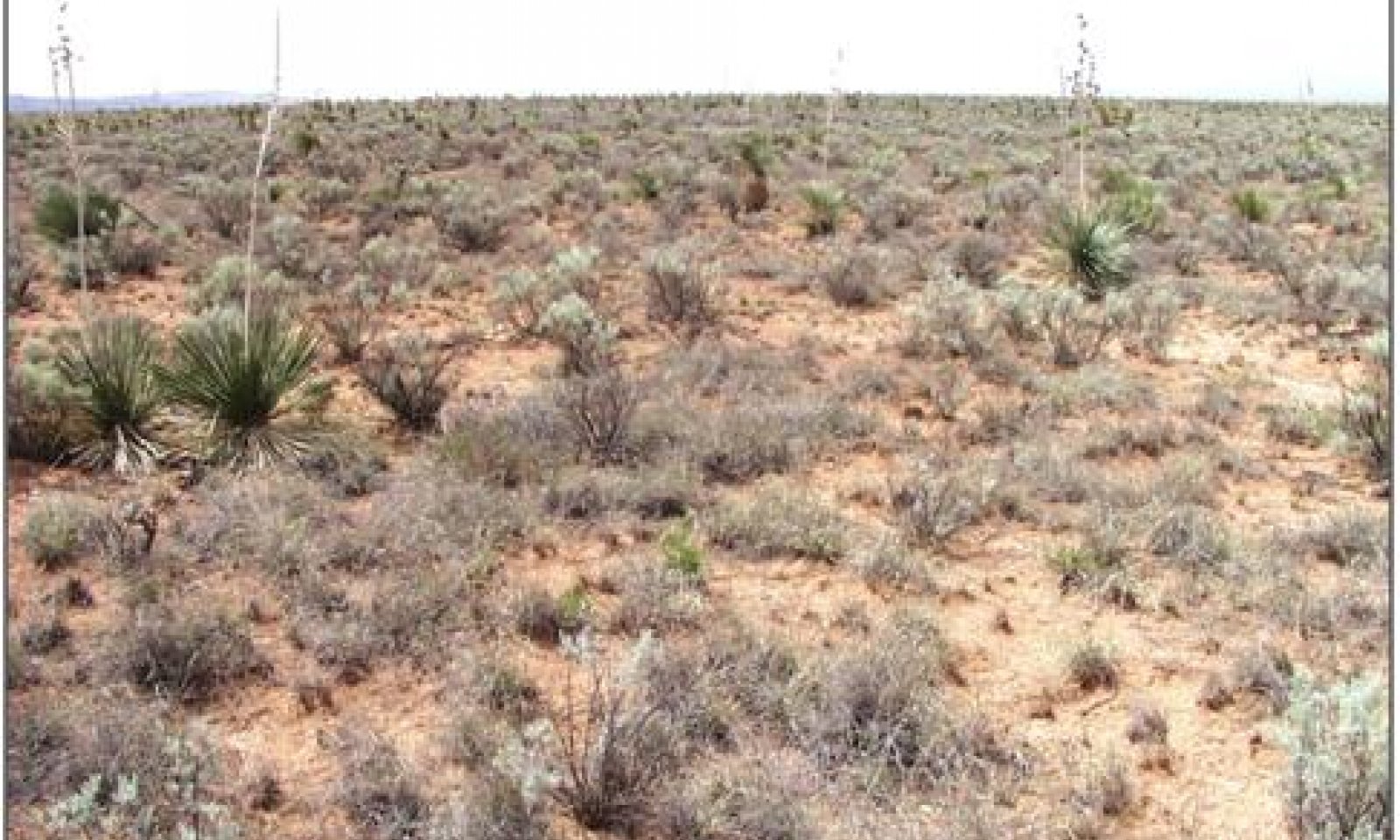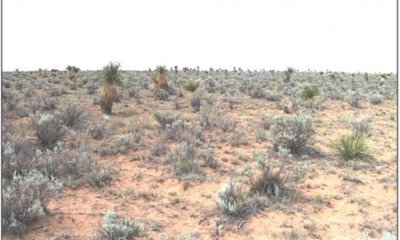
Loamy Sand, Dry Mixed Prairie
Scenario model
Current ecosystem state
Select a state
Management practices/drivers
Select a transition or restoration pathway
- Transition 1a More details
- Transition 1b More details
-
No transition or restoration pathway between the selected states has been described
Target ecosystem state
Select a state
Description
This state is characterized by the dominance of sand sagebrush, decreased grass cover and increased erosion. The reduction in grass cover results in increased wind erosion. Resources are redistributed around remaining shrubs and grasses. The more extensive root system of sand sagebrush allows it to exploit concentrated resources below the shrub canopy as well as remaining resources beneath bare areas. Grazing or drought induced retrogression can cause a shift in grass dominance from black grama to dropseeds or threeawns. New Mexico feathergrass may attain dominance among grasses during periods of wet winters and dry summers where climate favors C3 grass production.3 Forage preference for black grama may facilitate this change in grass composition.
Submodel
Mechanism
This site is highly susceptible to wind erosion if adequate plant cover is not maintained. Over grazing and or drought can cause a reduction in plant cover, reducing soil aggregate stability and increasing erosion potential. Black grama cover can be reduced by its inability to persist when covered by sand.2 Characteristics of sand sagebrush such as, prolific seed production and the ability of the seed to remain viable over time enable it to take advantage of favorable climate and establish seedlings.
Key indicators of approach to transition:
Reduction in grass cover and increase in size and frequency of bare patches.
Increase in amount of sand sagebrush seedlings.
Evidence of litter movement—indicating loss or redistribution of organic matter.
Evidence of accelerated wind erosion such as; formation of pedestals, soil deposition, and blowout areas.
Mechanism
Brush management is necessary to remove resource competition from shrubs and increase grass cover. Reestablishing cover will also provide organic matter, increase aggregate stability, and reduce erosion potential.4 Prescribed grazing will help ensure proper forage utilization and plant vigor, especially during times of drought. The degree of erosion and loss of soil resources may dictate whether or not the system is capable of recovery.
Model keys
Briefcase
Add ecological sites and Major Land Resource Areas to your briefcase by clicking on the briefcase (![]() ) icon wherever it occurs. Drag and drop items to reorder. Cookies are used to store briefcase items between browsing sessions. Because of this, the number of items that can be added to your briefcase is limited, and briefcase items added on one device and browser cannot be accessed from another device or browser. Users who do not wish to place cookies on their devices should not use the briefcase tool. Briefcase cookies serve no other purpose than described here and are deleted whenever browsing history is cleared.
) icon wherever it occurs. Drag and drop items to reorder. Cookies are used to store briefcase items between browsing sessions. Because of this, the number of items that can be added to your briefcase is limited, and briefcase items added on one device and browser cannot be accessed from another device or browser. Users who do not wish to place cookies on their devices should not use the briefcase tool. Briefcase cookies serve no other purpose than described here and are deleted whenever browsing history is cleared.
Ecological sites
Major Land Resource Areas
The Ecosystem Dynamics Interpretive Tool is an information system framework developed by the USDA-ARS Jornada Experimental Range, USDA Natural Resources Conservation Service, and New Mexico State University.


